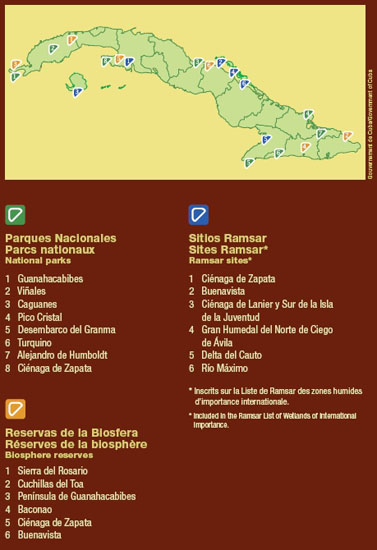Sixteenth-century Spanish chronicler Bartolomé de las Casas wrote: You could journey across the island entirely under the trees. But colonization, plantations, urbanization and logging to export such prized species as mahogany, ironwood and cedar soon took a heavy toll on the country's natural habitats and their biodiversity.
In 1930, however, a first national park was created: the Parque Nacional Sierra del Cristal - today called the Parque Nacional Pico Cristal, in Holguin province. Three years later, the Zapata swamps (which Marie-Victorin would visit) were turned into a national reserve. Over the years, legislation was passed to protect the flora or fauna in other areas as well (the pink flamingos on the north shore in Camaguey province, for instance).
In 1959, the new Cuban government stepped up conservation and regulatory management efforts, creating several new national parks. Today, 9.72% of Cuba's territory is protected under the Sistema Nacional de areas Protegidas (SNAP). And all the habitats protected by regional or local legislation bring the total to 22%!
Many of these habitats are open to the public, as are the Havana and other botanical gardens. If you go to Cuba, follow in Marie-Victorin's footsteps and explore this fabulous nature!
|  |

